There is only one place in the world where you can find various airworthy, historic Saab fighter aircraft. Not surprisingly, that’s where all of these were developed and built: Sweden.
Text and photos: Emiel Sloot
12 July 2025
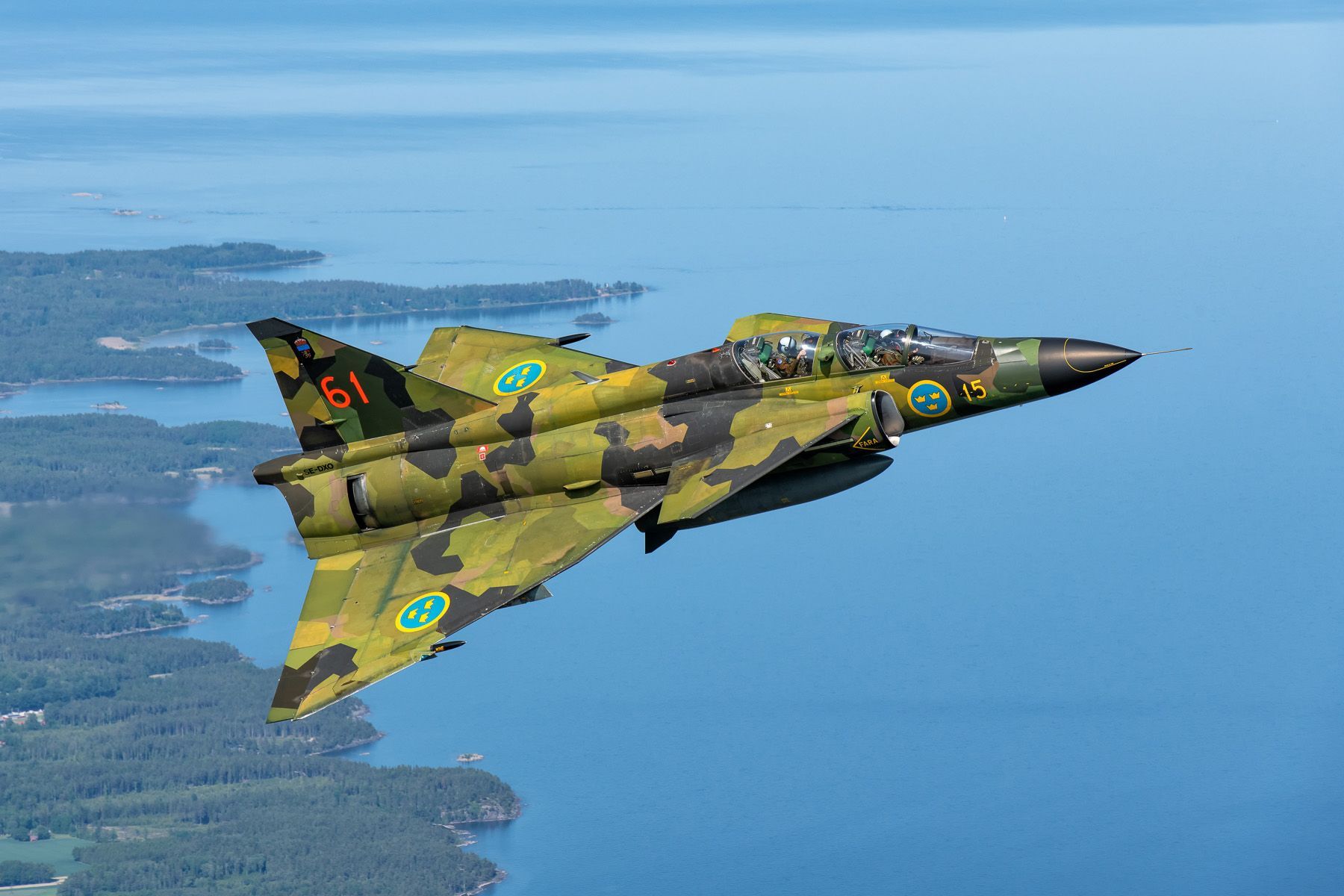
Saab
Sweden’s long-standing neutrality effectively came to an end on 7 March 2024 when the Scandinavian country joined the NATO alliance. While other non-aligned countries apparently did not see any hurdles in procuring defence equipment from either ‘West’, ‘East’ or even both, Sweden had taken its stance seriously. In order not to rely on the exterior world, they decided to develop their own combat aircraft following World War II. Still, some foreign designs would join Flygvapnet service such as the Supermarine Spitfire, North American P-51 Mustang, De Havilland Vampire and Venom, and the Hawker Hunter. However, Saab Aircraft would become the preferred supplier for fighter aircraft, up until this very date.
Saab would develop and produce a number of iconic and impressive aircraft that served with their air arm in large numbers. Many airframes have found their way to various museums following retirement. Of course, the ultimate way to display these old warriors is in the air. For exactly that reason, the Swedish Air Force Historic Flight was established around the turn of the century.
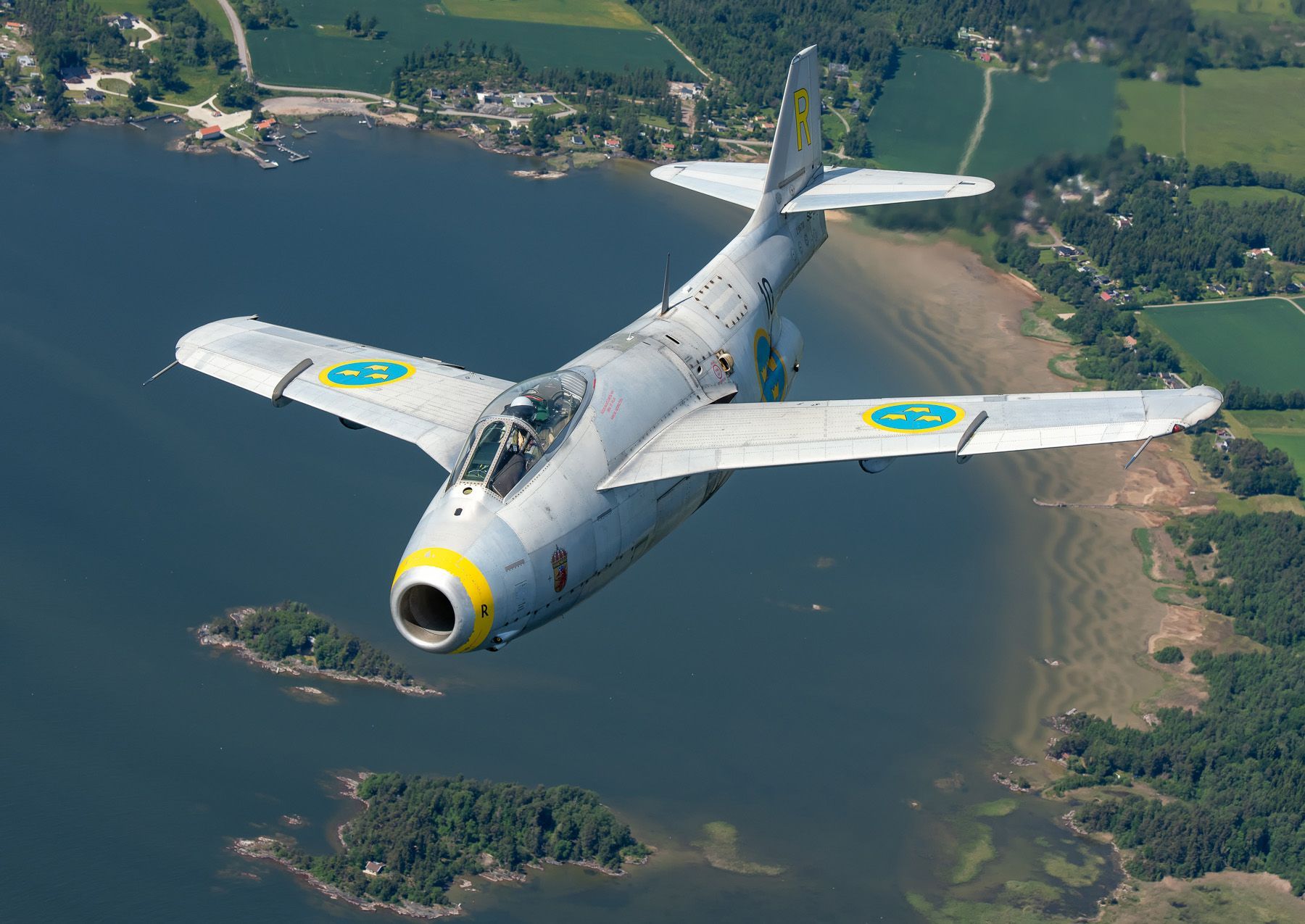
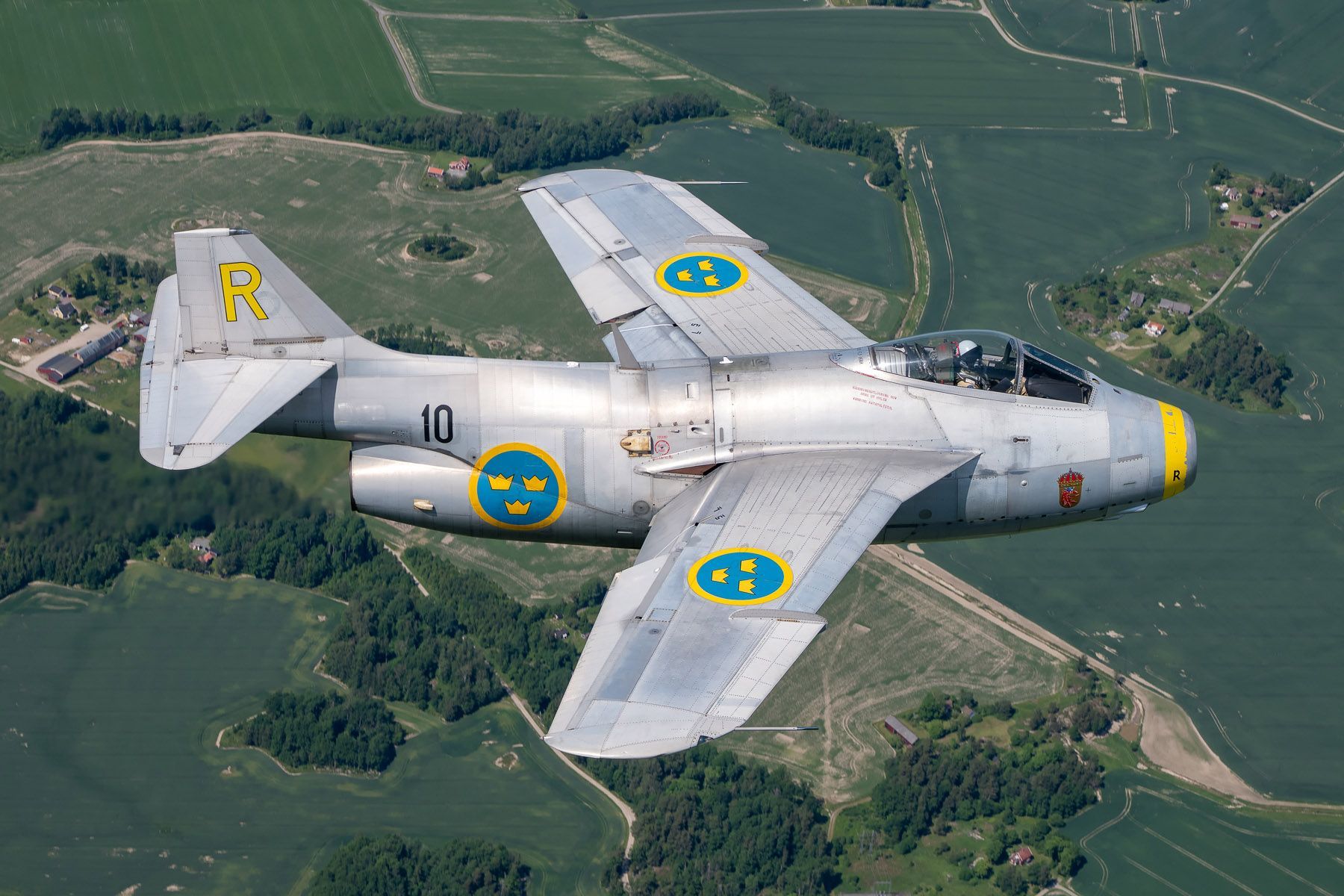
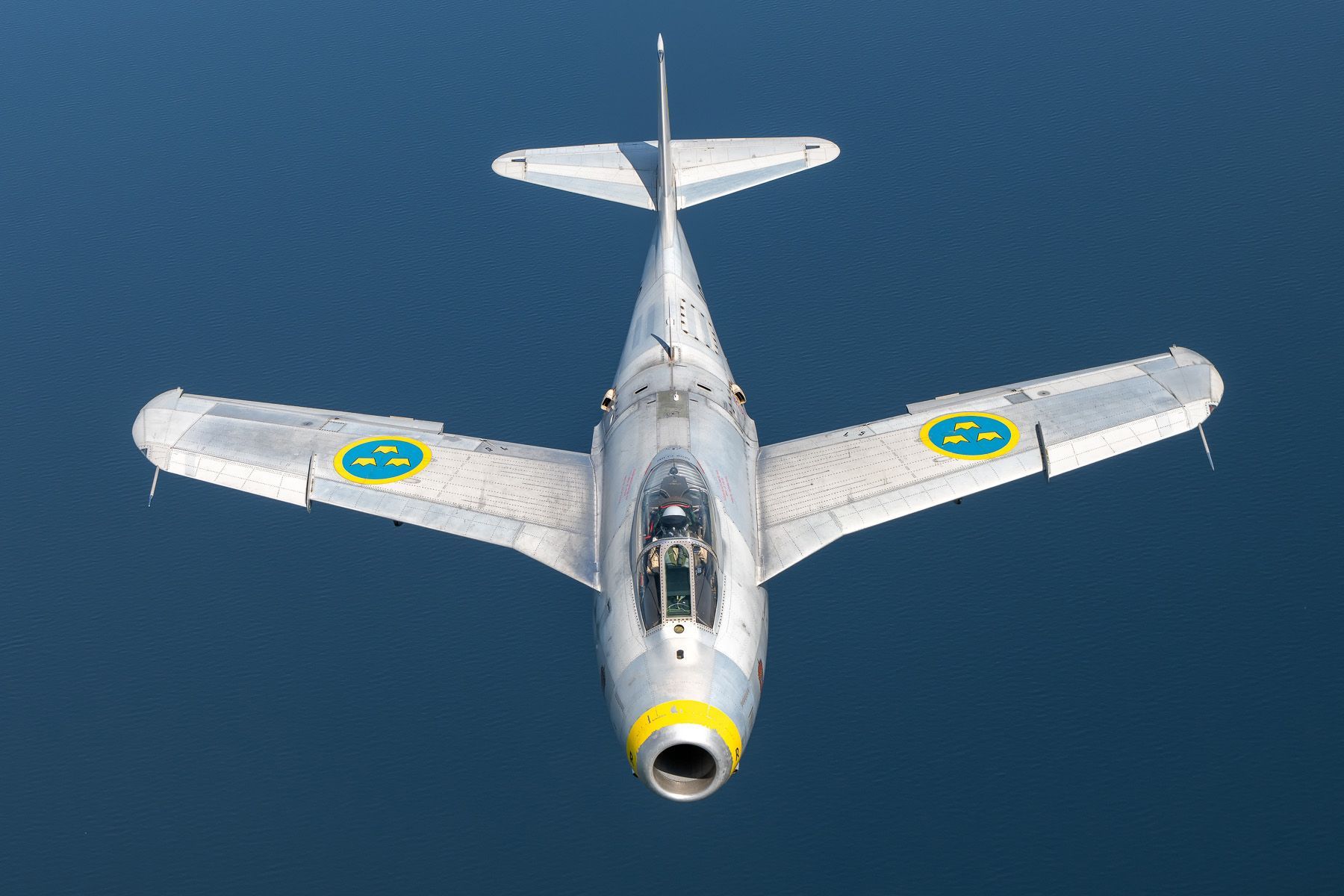
SwAFHF History
The Swedish Air Force Historic Flight or SwAFHF in short was originally established by four founding members in 1997. Parallel to that, the Swedish air force’s F 10 Wing at Ängelholm had started to create a historic squadron under approval of the air force headquarters. They planned to operate a pair of both Saab Lansens and Drakens, the last examples of which had retired just recently at that stage. However, F 10 disbanded soon after with the designated Drakens transferring to nearby Halmstad, home of the air force technical school, while the Lansens remained stored at Malmen. A couple of years later, these particular Lansens along with qualified personnel moved to F 7 at Såtenäs, the new home base for the SwAFHF. Following this transfer, the vintage flights could commence alongside a restored Saab J 29F Tunnan and a former Swiss air force Hawker Hunter F. Mk 58 in Swedish colours. Today, the jet section of the SwAFHF still operates out of Såtenäs, home base of F 7 Skaraborgs Flygflottilj that controls two squadrons of Saab JAS 39C/D Gripens as well as the air force’s transport wing.
The SwAFHF’s fleet is operated and maintained by a group of dedicated volunteers, mostly featuring a military background. As the name implies, its primary goal is to focus on keeping former Swedish Air Force aircraft in the air, while painted and marked in a way that closely represents the particular military history of those aircraft. As mentioned before, the designs are rather unique and therefore worth preserving and displaying. The Swedes have always been notably proud to be able to develop and built combat aircraft that were and are both modern and capable for their time.
While depending on volunteers, the SwAFHF is organised in a professional manner. Lead by a president, the board oversees the various activities such as flight operations, aircraft maintenance and the airworthiness management. The historic flight has a few partners to assist in keeping the fleet in the air, including the air force, Saab Aircraft and the Forsvarets Materiel Verk (the Swedish defence procurement, evaluation and test agency). Sponsors and support members are present to back up financially.
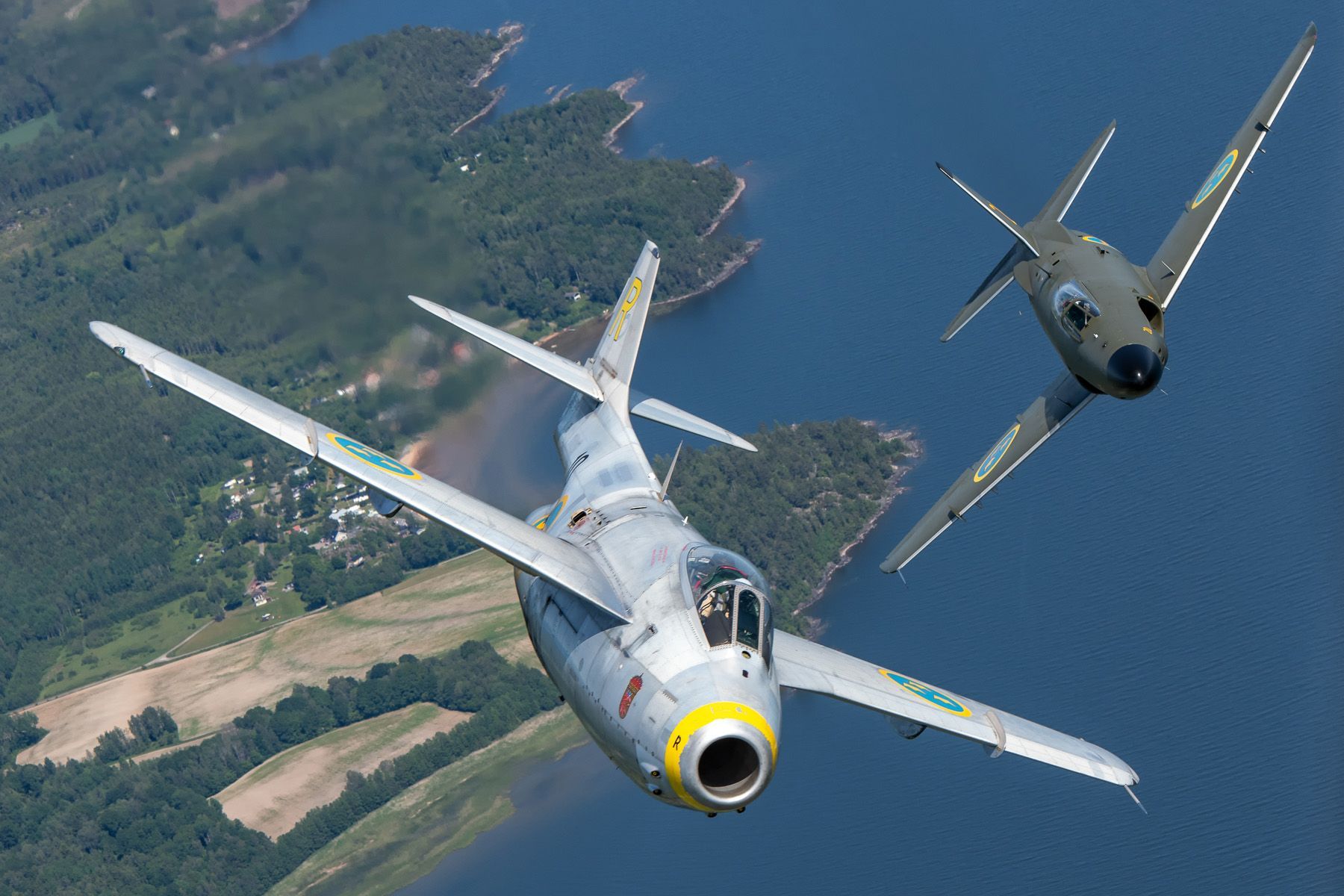
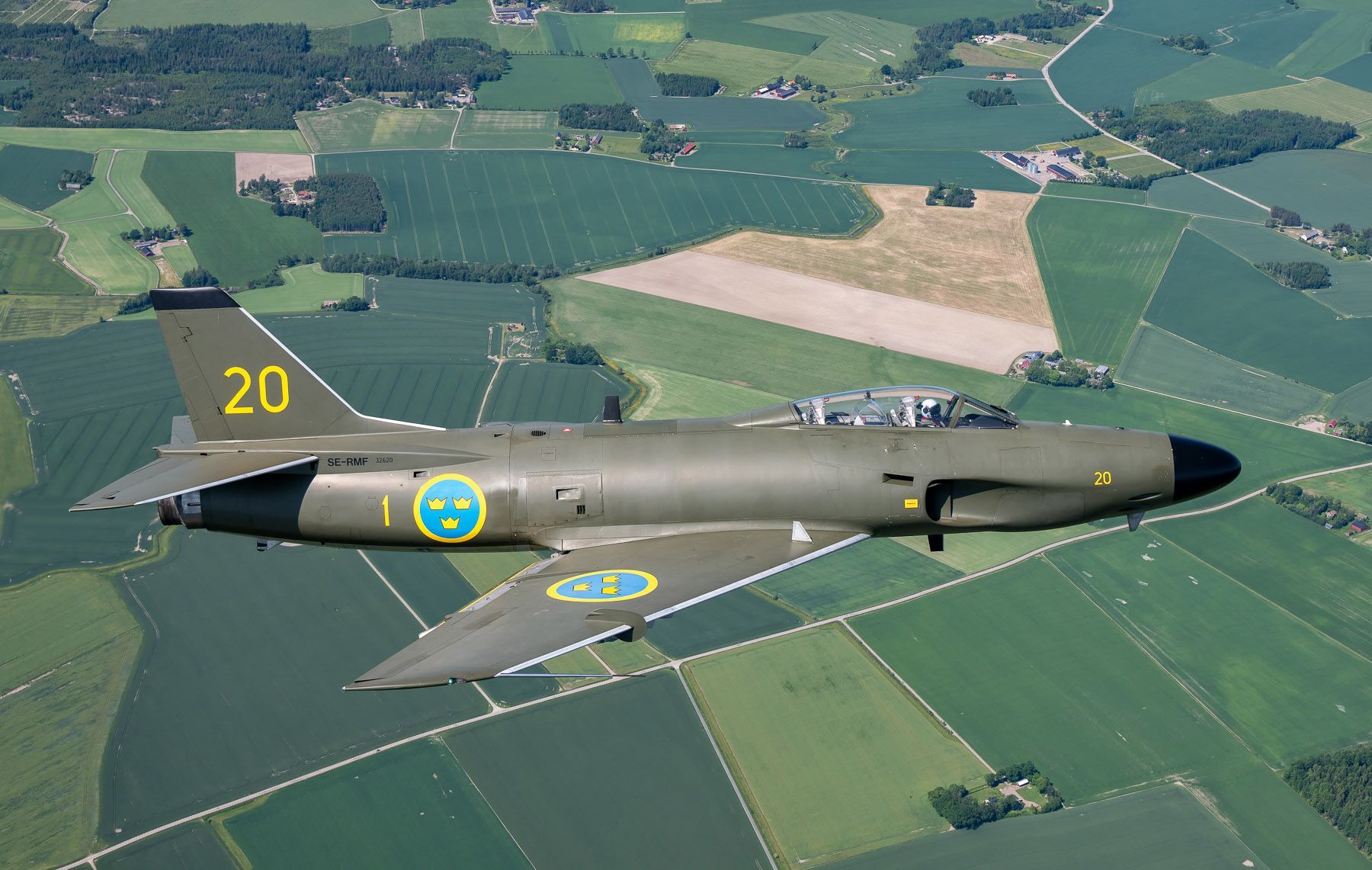
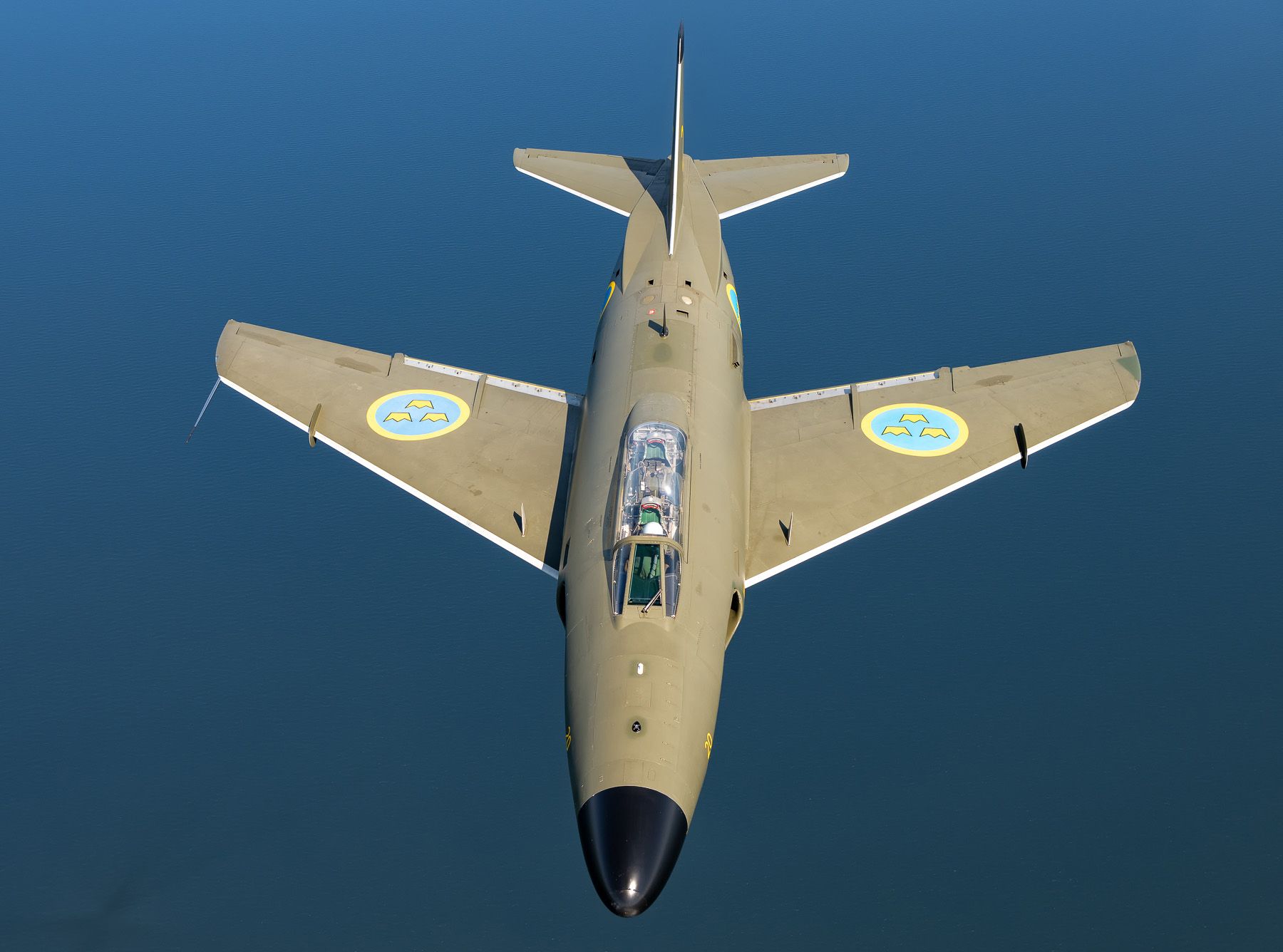
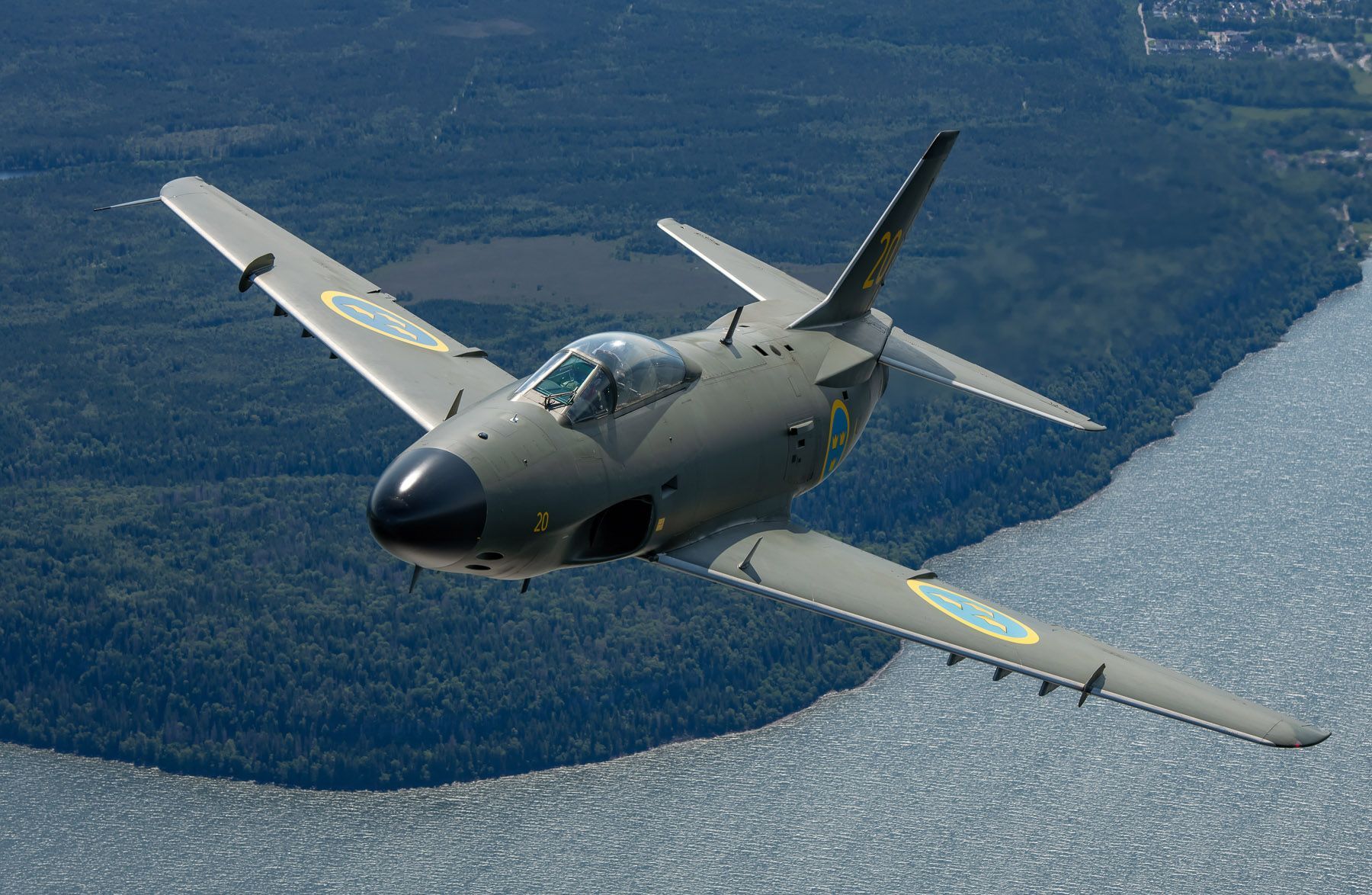
Barrels and Lances
The world’s only flyable Saab J 29F Tunnan or Flying Barrel is registered SE-DXB. The advantage of being a relatively simple, basic aircraft is that there were no large modifications needed to be operated in civilian hands, although GPS navigation and a new mandatory modern radio were installed. This particular aircraft first flew as a J 29B variant on 4 March 1955 and entered service with the Flygvapnet as 29670 one month later. It operated with various units such as F 9 (based at Göteborg-Säve), F 10 (Ängelholm) and F 3 (Linköping-Malmen), ending up with training wing F 20 at Uppsala. Here it carried out its last flight on 30 June 1968. The airframe subsequently ended up in the air force museum storage at Malmen.
In 1991, a team from F 10 Wing started to restore 29670 into flying condition, resulting in another ‘first flight’ on 11 July 1995. Today, the aircraft is still owned by the Flygvapenmuseet (Air Force Museum), while operated and maintained by the SwAFHF. It currently wears ‘Gul Rudolf’ markings (the yellow ‘R’ on the vertical tailplane) of F 10 Wing.
While 30 Saab Tunnans were exported to Austria, the Saab Lansen exclusively saw service in Sweden. Although it was operated in electronic warfare and target towing roles until 1997, its operational days as combat aircraft already ended in 1978. Still, the SwAFHF manages to keep no less than three Lansens airworthy, a remarkable achievement.
The one pictured in this article, J 32B 32620, was the very last Lansen to be manufactured. It first flew on 14 March 1960 and was delivered to F 1 (based at Västerås) two months later. It also served with the air force test unit at Malmen as well as with F 12 at Kalmar, before returning to Västerås where this Lansen ended its military career. It returned to the sky with the SwAFHF, and today it is the lowest-hour Lansen airframe, logged less than 2,000 flying hours in total.
The SwAFHF’s other Lansens are J 32Bs 32542 (registered SE-RMD) and 32606 (SE-RME). The latter is a former J 32D target-towing aircraft that continued service for FMV as ‘sniffer’ aircraft able to take air and radiation samples.
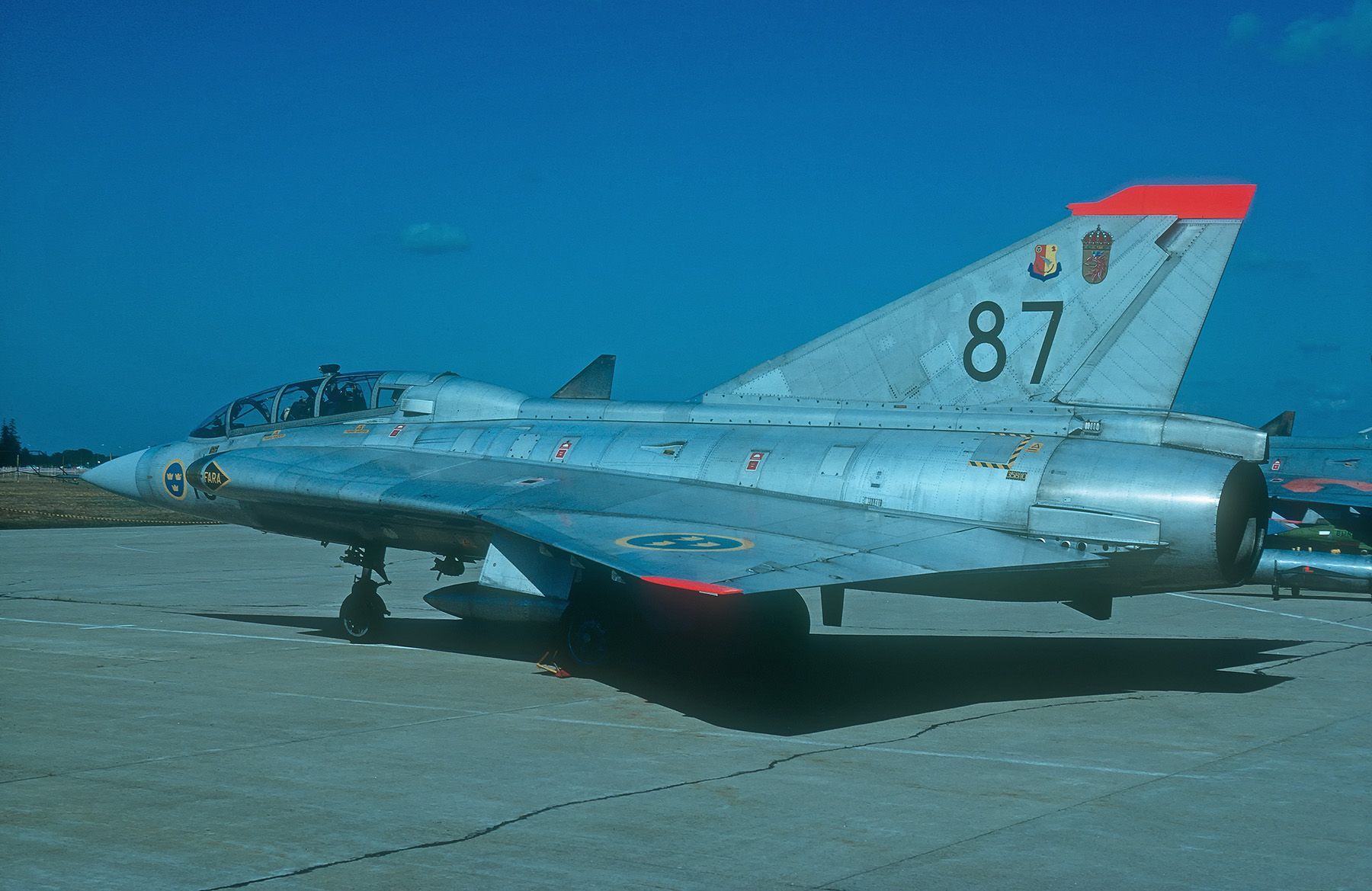
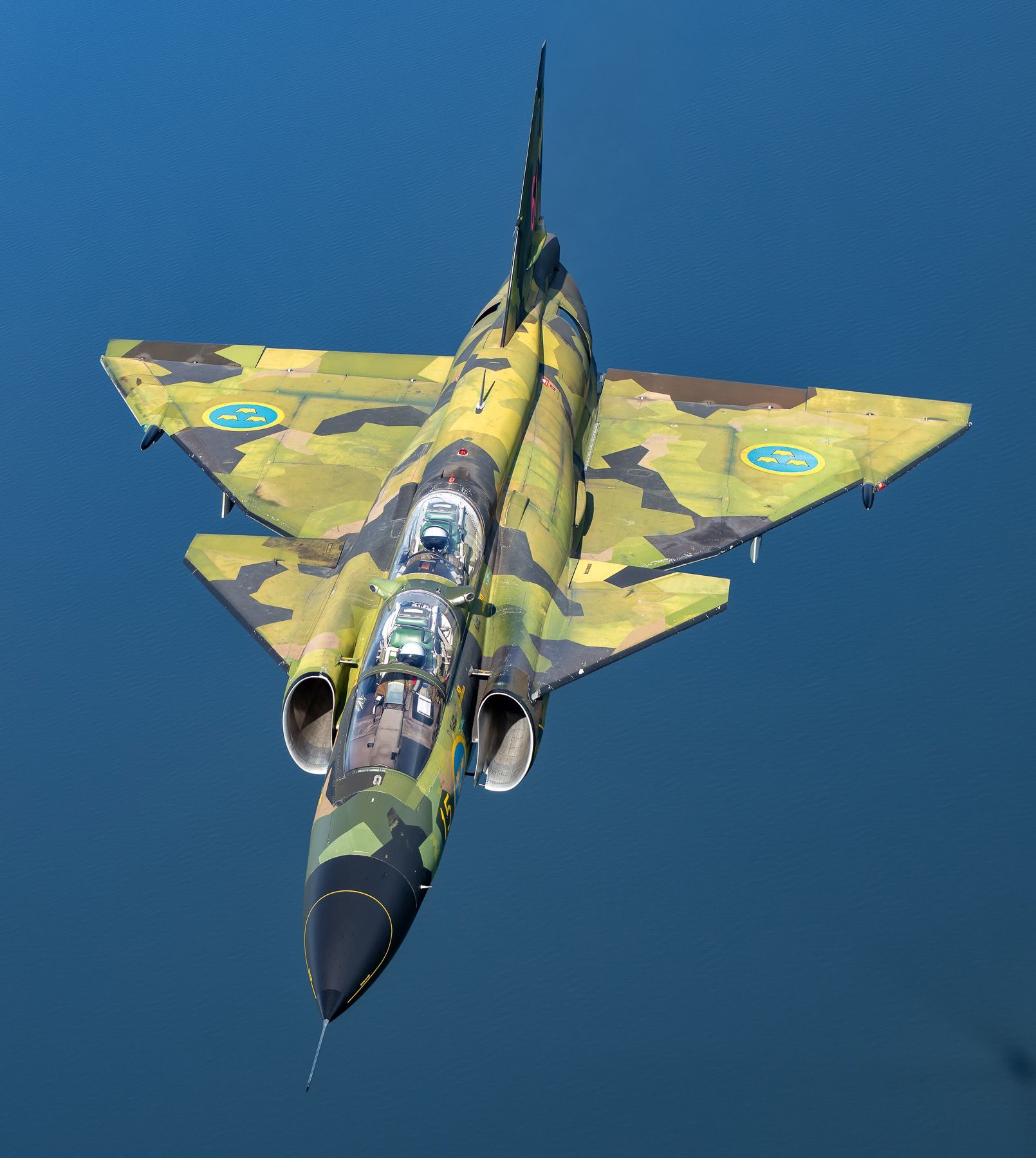
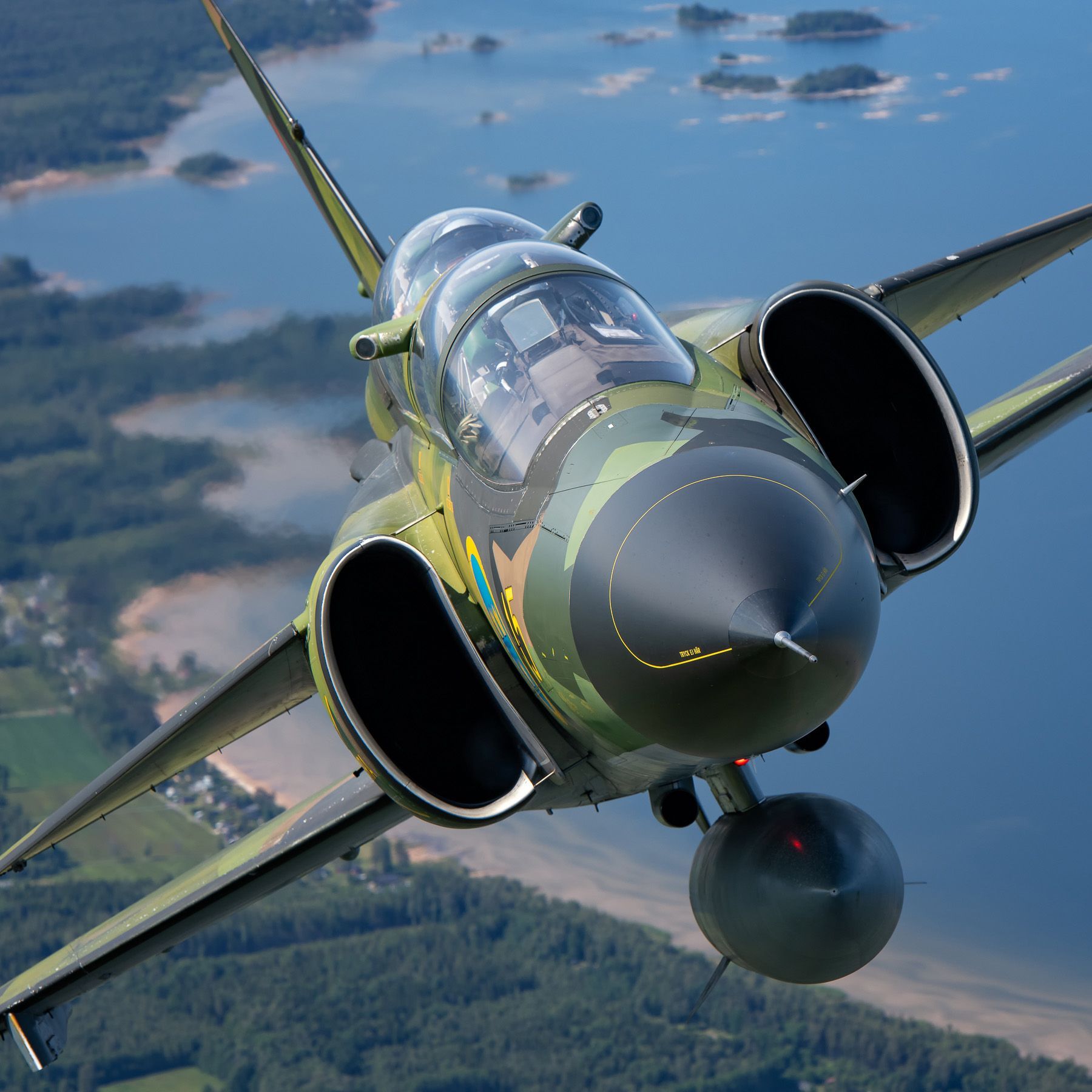
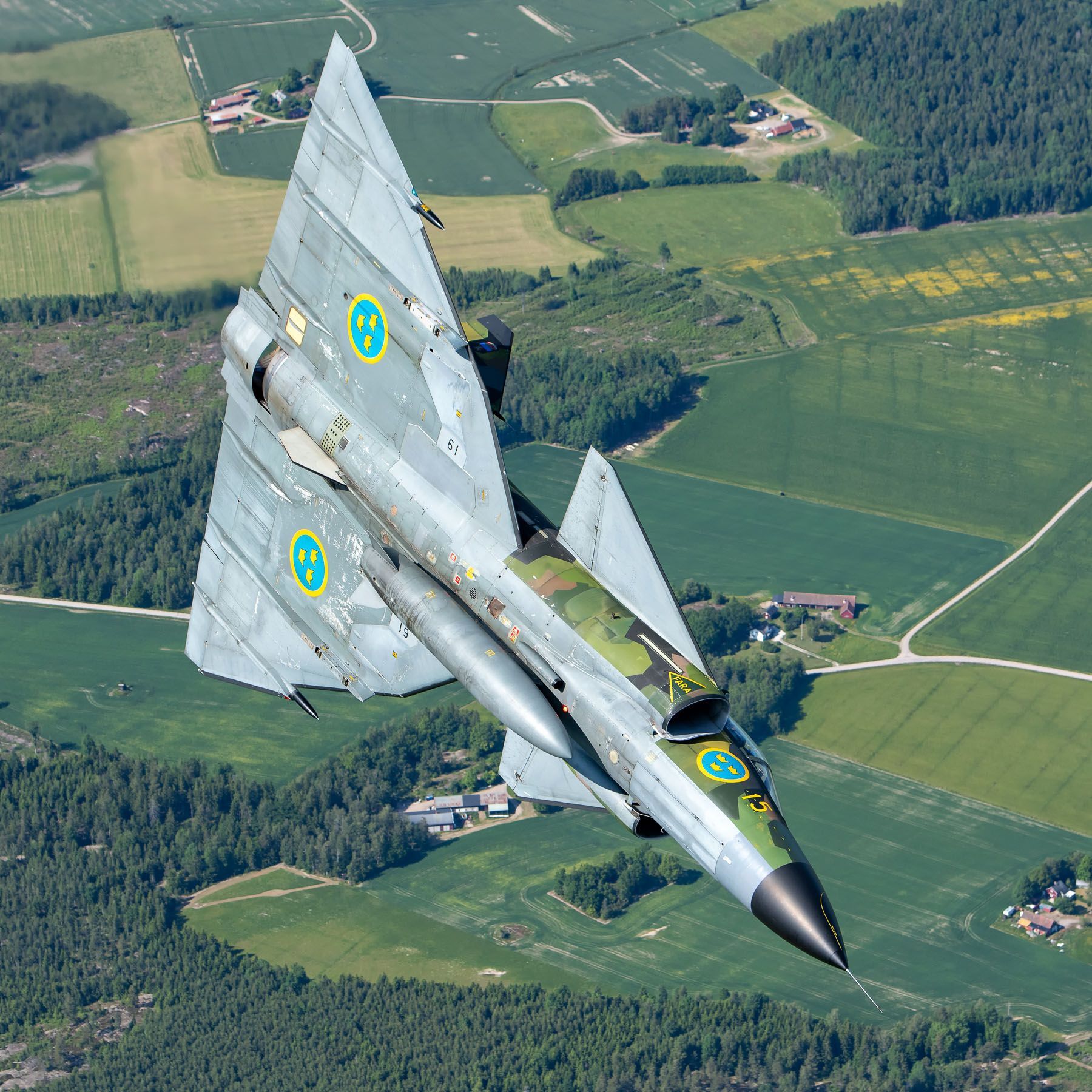
From the delta Draken to the mighty Viggen
Both the Saab Draken and Viggen served in large numbers with the air force, and of these types of aircraft, a pair of each – single- and dual-seat versions – are present within the SwAFHF fleet.
Draken 35556 operated with the air force between 5 February 1969 and 12 December 1998, when the last of these delta-winged fighters were withdrawn from service. Built as a J 35F, it was modified to J 35J by the late 1980s, rejoining F 10 Wing at Ängelholm as the last Swedish unit to operate the Draken. The SwAFHF resprayed the aircraft in the original camouflage scheme, and registration SE-DXR was applied. Two-seat Sk 35C 35810 was delivered to the air force on 17 October 1962 and used solely for pilot conversion with F 16 and F 10 Wings, until being withdrawn from service on 28 August 1997. The trainers all appeared in a silver finish and the SwAFHF operates their dual Draken as such, now registered SE-DXP.
Although the air force operated AJ 37 Viggen 37098 for over three decades, it only flew with two different units, being conversion wing F 15 at Söderhamn and F 7. At one point the airframe was converted to AJS 37, and after retirement it was restored to flying condition by the SwAFHF and given registration SE-DXN. Airborne again since 27 March 2012, it now resembles the type’s early days in its metal finish and F 7 markings.
The air force’s two-seat Sk 37 Viggens were initially solely used for pilot conversion training, until ten of these were adapted to Sk 37E variants between 1997 and 2000. These were equipped with specialised electronic warfare equipment to replace the J 32E Lansens in this role. SwAFHF’s Sk 37E 37809 is one of these converted aircraft. It first flew on 11 September 1973, and following its modification to Sk 37E in 1999/2000 it continued to serve with F 21 at Luleå and F 15 at Söderhamn, until it was retired on 4 September 2007. The Historic Flight took it over to become SE-DXO and since its first flight in May 2018, it operates the aircraft in F 15 markings while featuring the unique and attractive splinter camouflage pattern.
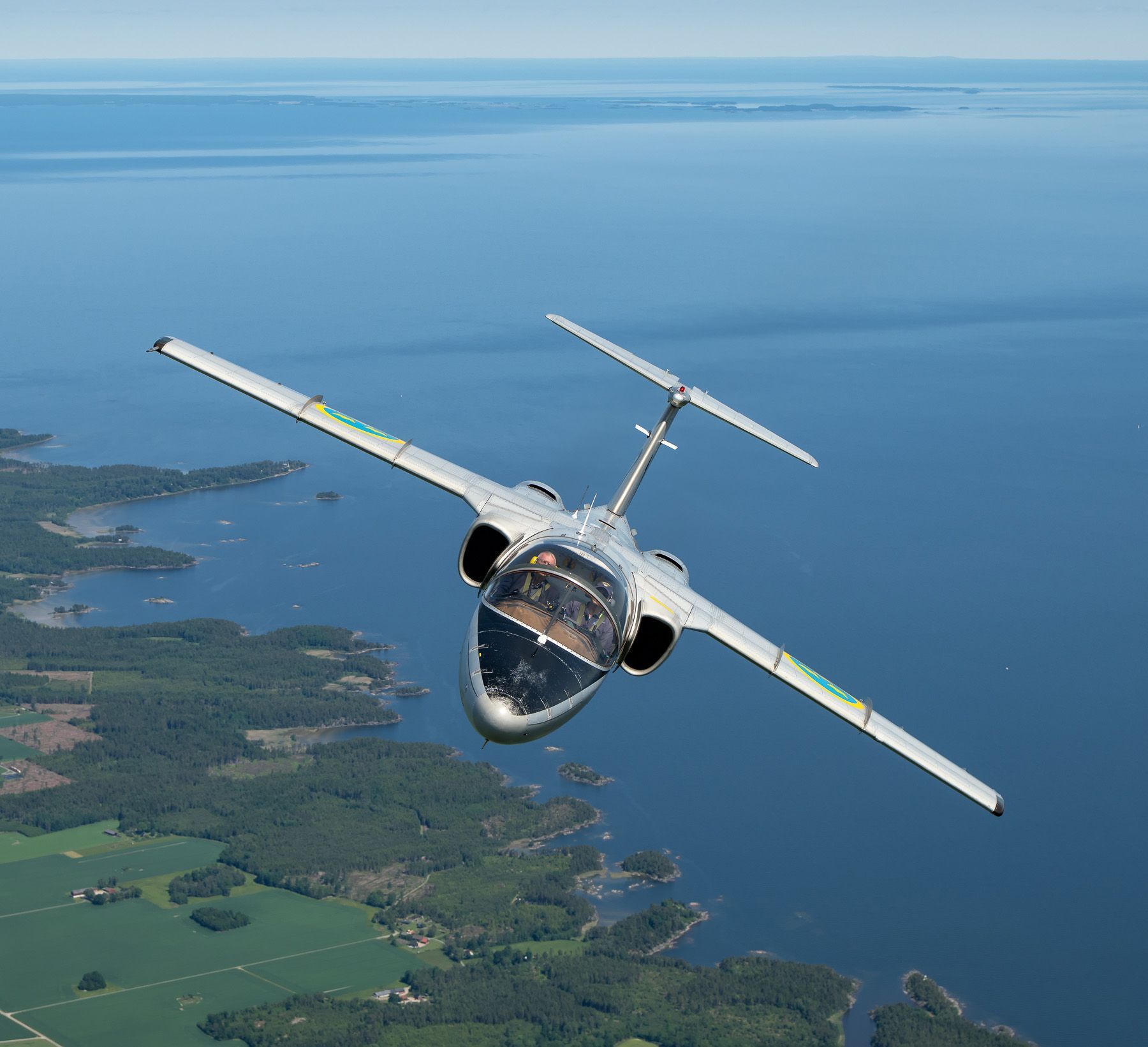
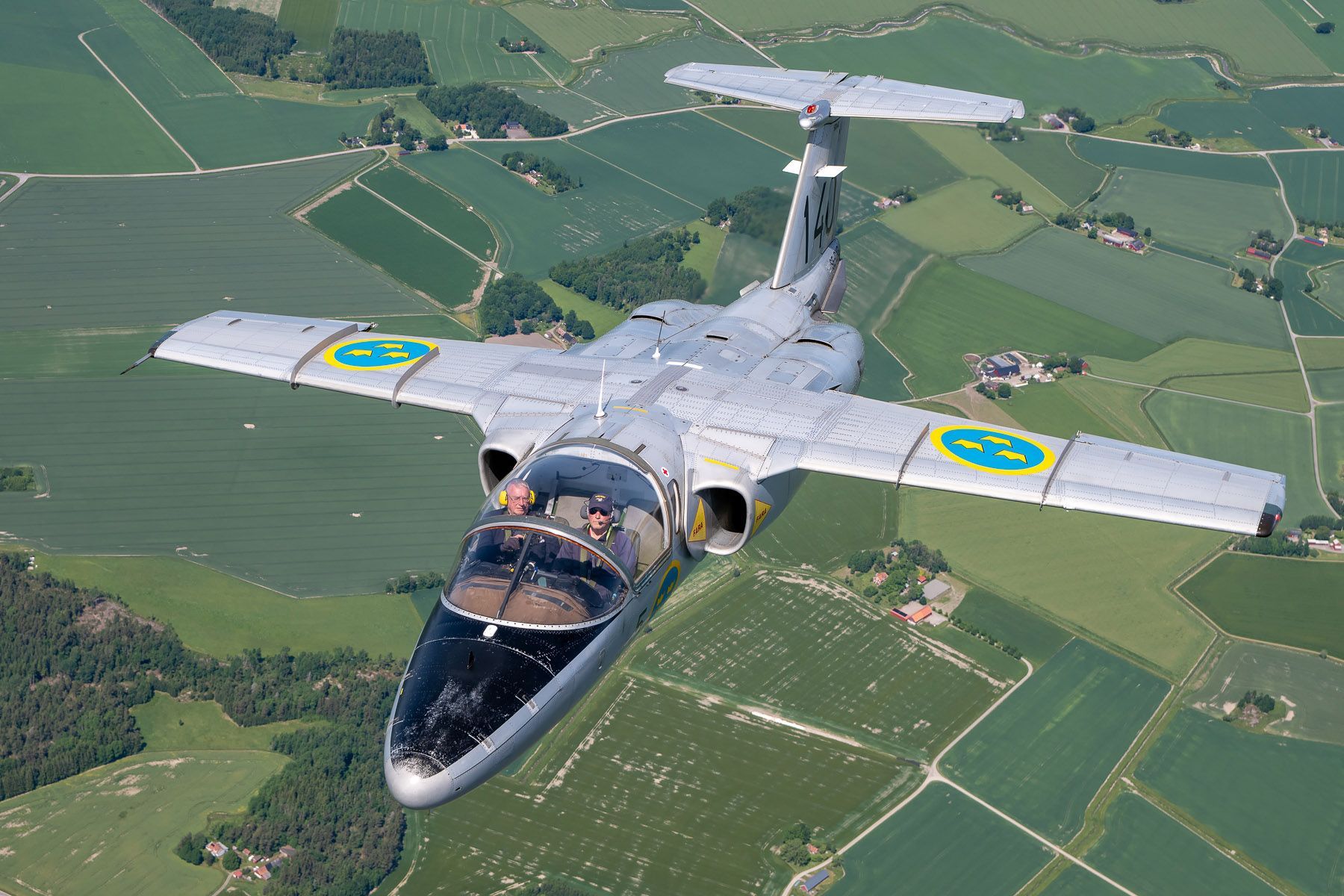
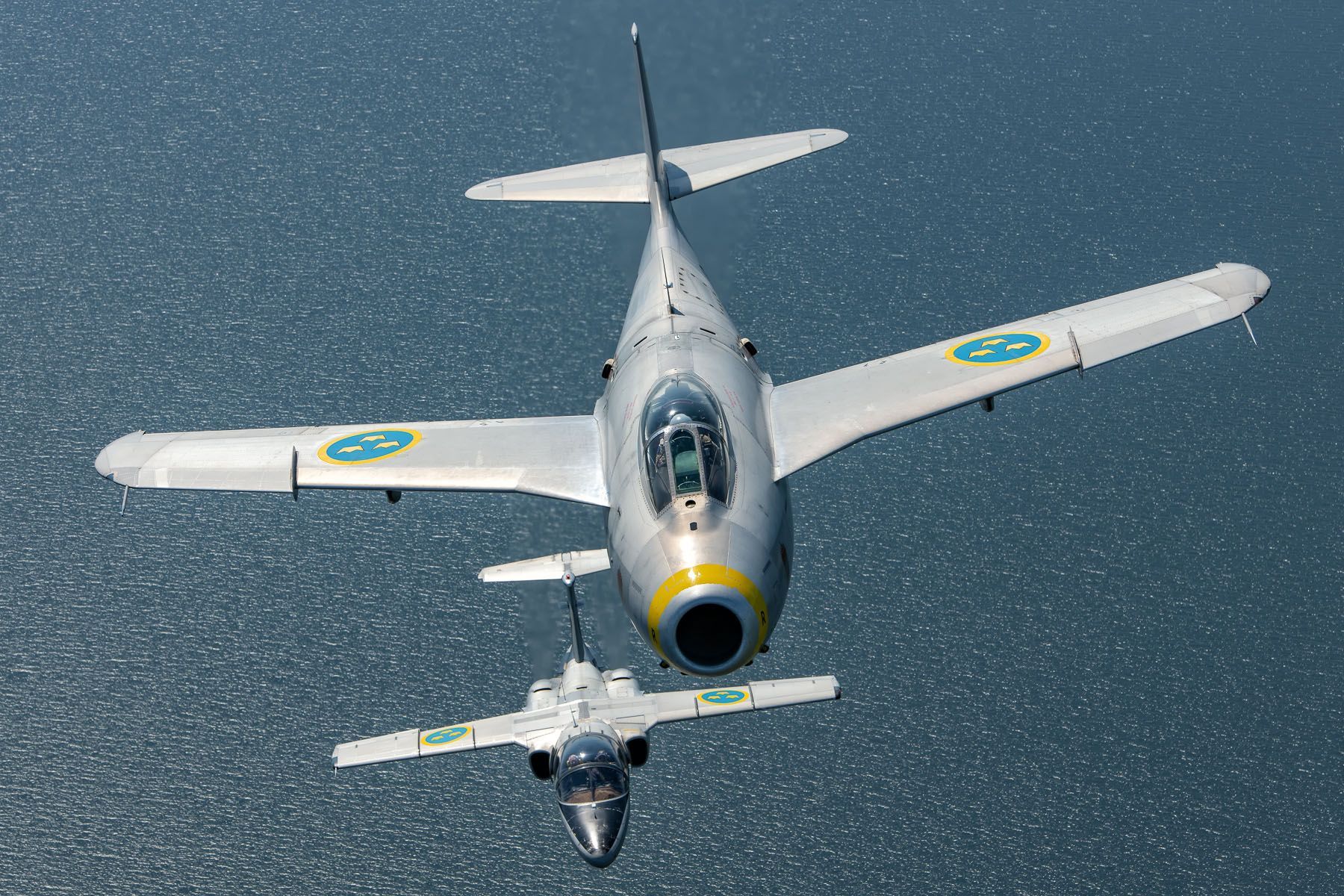
The versatile trainer
In 2024, the air force retired their Saab 105 aircraft. For decades, numerous military pilots earned their wings on this aircraft designated Sk 60. But it was more than just a training platform, as some were converted to do light attack and reconnaissance duties during the Cold War, while others served as liaison aircraft with its ejection seats removed thus becoming a four-seater. Furthermore, six Sk 60s equipped Team 60, the air arm’s flight demonstration team.
The SwAFHF currently operates a single Sk 60, of a rare subversion and with original power plants. Registered SE-DXG, it is in a metal finish representing the early days of the type while in service with F5 Wing at Ljungbyhed. Saab 105 serialled 60140 was manufactured in 1968 and in 1979 it was converted to Sk 60E as part of a batch of ten aircraft. This version received flight instruments as well as navigation and communication systems that enabled it to operate in civilian international airspace. Furthermore, the ejection seats were permanently replaced by fixed ones, enabling it to carry two passengers in the rear cabin. The initiative for this update was a joint project between the Swedish air force and Scandinavian Airlines System (SAS). A programme was developed to minimise the number of pilots leaving the military for a civilian career, and the selected students that were to train on the Sk 60E were commissioned as reserve officers with wartime assignments in light attack or reconnaissance duties.
In 1999, the Sk 60Es were retired and stored. Aircraft 60140 was prepared for flight by the Historic Flight in 2009. Still configured as a Sk 60E, it was upgraded with new 8.33 kHz spacing radios as well as a Mode S transponder with ADS-B out. While the remaining Sk 60s operating with the air force had been re-engined with a pair of Williams FJ44-1C power plants, 60140 is still powered by the original Turboméca Aubisque RM 9B engines. As there is not much operating hours left for these, flights with 60140 are limited to extend its use as long as possible. Meanwhile, the SwAFHF has received a few additional Sk 60s following the withdrawal of the type with the air force in 2024. Reportedly, these airframes include 60105 in the special Saab livery as well as two former Team 60 airframes. The organisation is currently in the process to get these submitted onto the civil register. Hopefully, these aircraft can be displayed during the 2026 season when the air force will be celebrating its 100th anniversary.
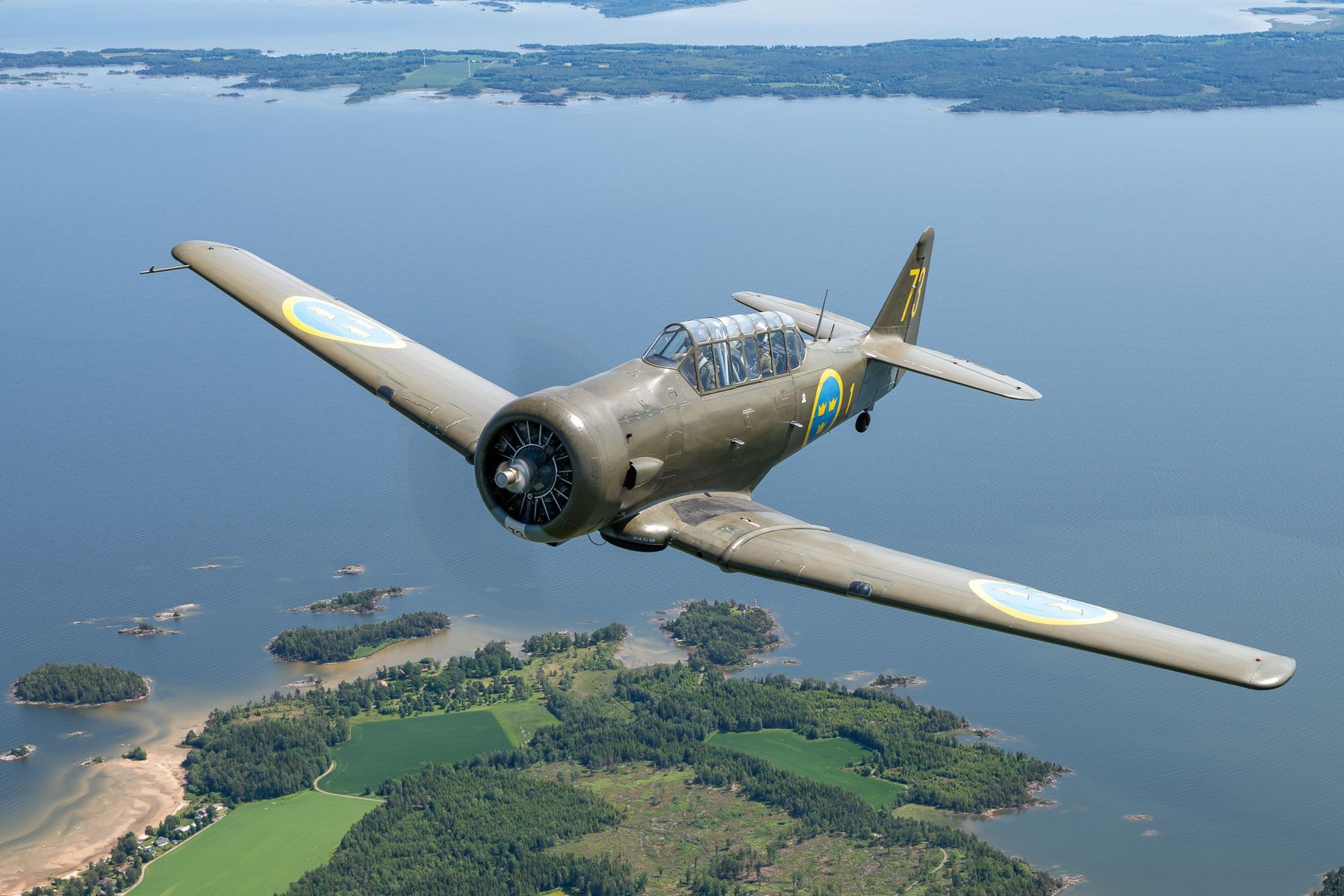
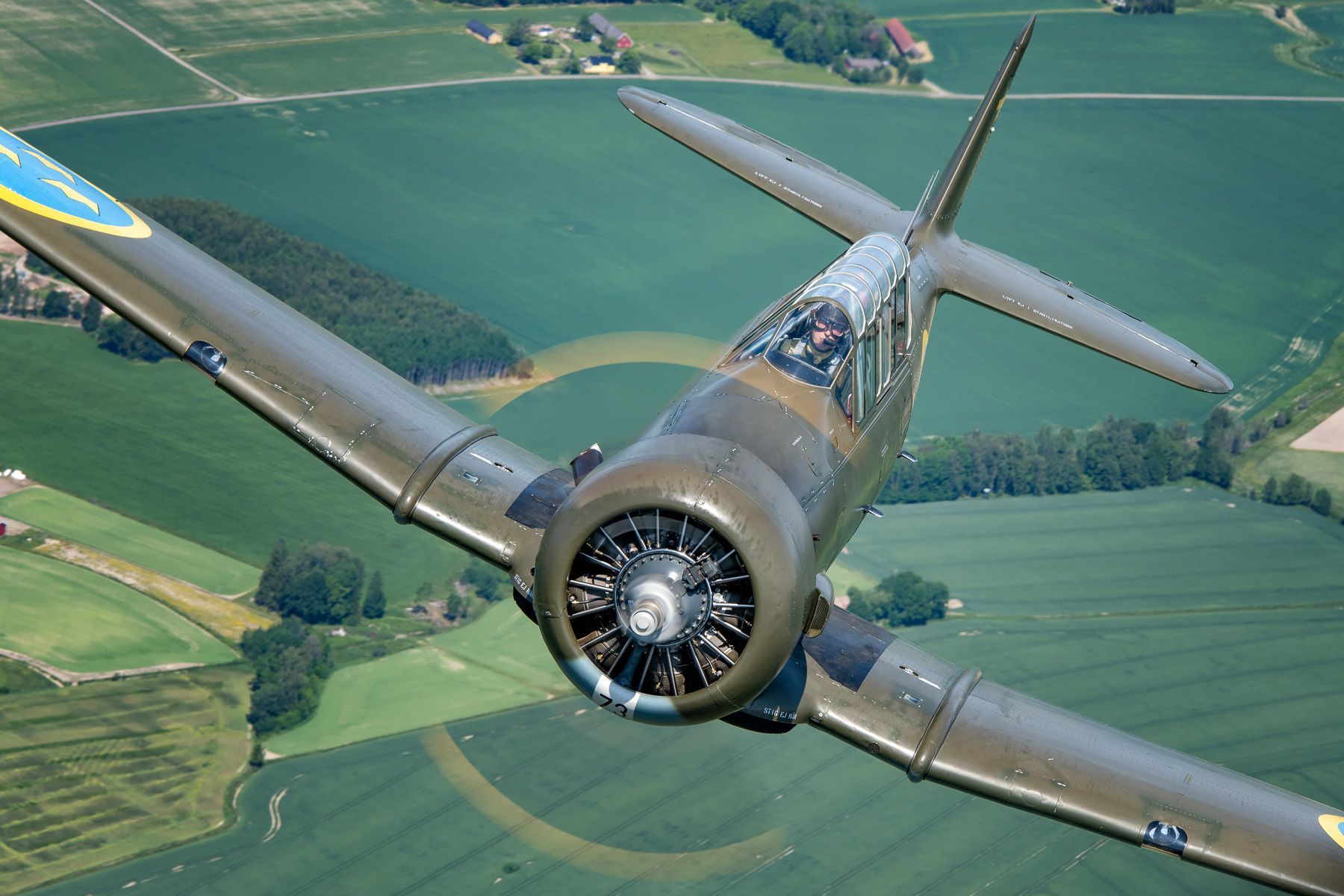
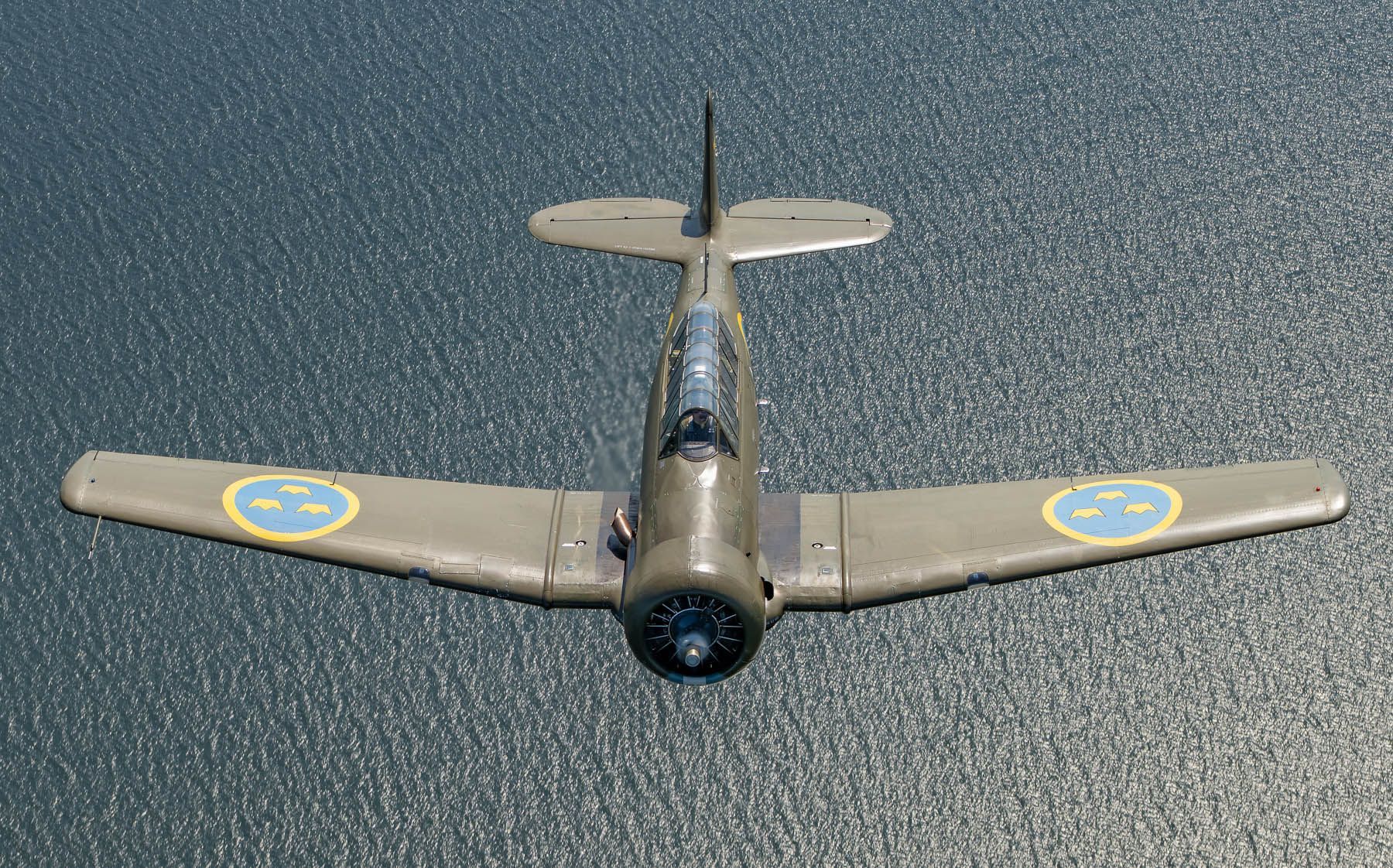
Piston Power
Of course, the jets do please many enthusiast fans and observers, but there is more. The piston-engined fleet of the SwAFHF is absolutely noteworthy as well. Largely located at Trollhättan, these aircraft are operated, maintained and supported by a separate staff.
The two Noorduyn AT-16 Harvard IIB trainers (Sk 16 in Swedish service) have different colour schemes. While 16028 (registered SE-FUB) wears the yellow trainer outfit used once by the Krigsflygskolan or F 5 Wing, 16073 (SE-FVU) is painted in olive drab with a grey underside, while marked as an aircraft operated by F 1 Wing.
In the past, the air force used the Saab Sk 50 Safir as a first step in the flying training syllabus until it was replaced by the Scottish Aviation Bulldog (Sk 61) in 1972. Examples of both types can be found at Trollhättan. Saab 91B Safir SE-FVV is a formerly Royal Norwegian Air Force aircraft where it was serialled 040. Bulldog 61025/SE-FYX is an old Flygskolan airframe, serving with F 5 at Ljungbyhed until the Sk 60 took over the Bulldog’s role in the basic flying training course.
The jewel of the propeller fleet is without doubt a Saab B 17A dive-bomber. Serialled 17239, it was manufactured during World War II and first flew in 1943. Its operator F 7 Wing applied a blue ‘J’ marking, dubbing the aircraft ‘Blå Johan’. As a target tug aircraft, it soldiered on until June 1968. Later, Saab would take care of it, eventually even restoring it to flying status in 1997. Registered SE-BYH, the aircraft was handed over to the SwAFHF on 20 December 2023 and is based at Såtenäs rather than Trollhättan. Of the very few survivors of this type today worldwide, it is the only flyable Saab B 17.
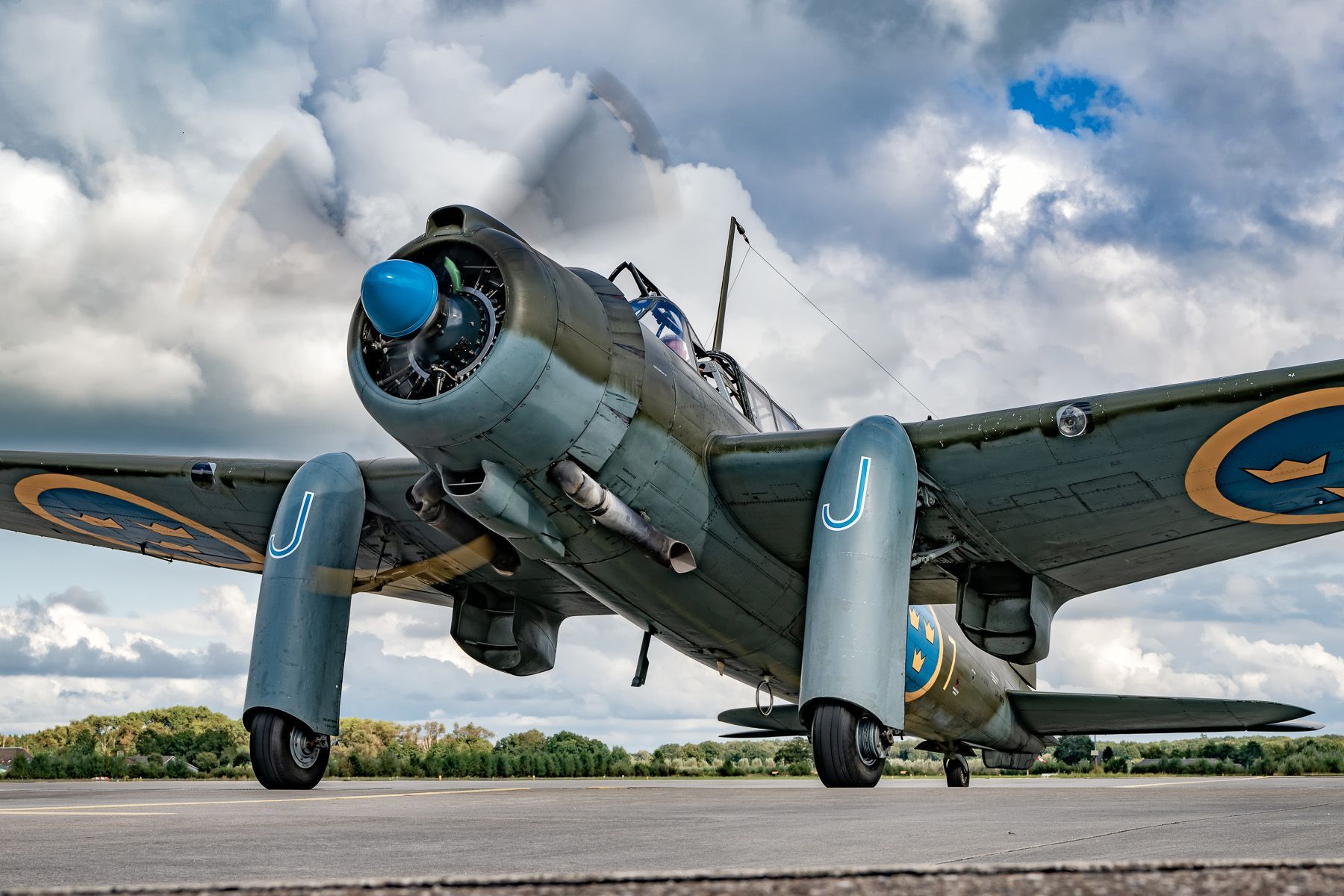
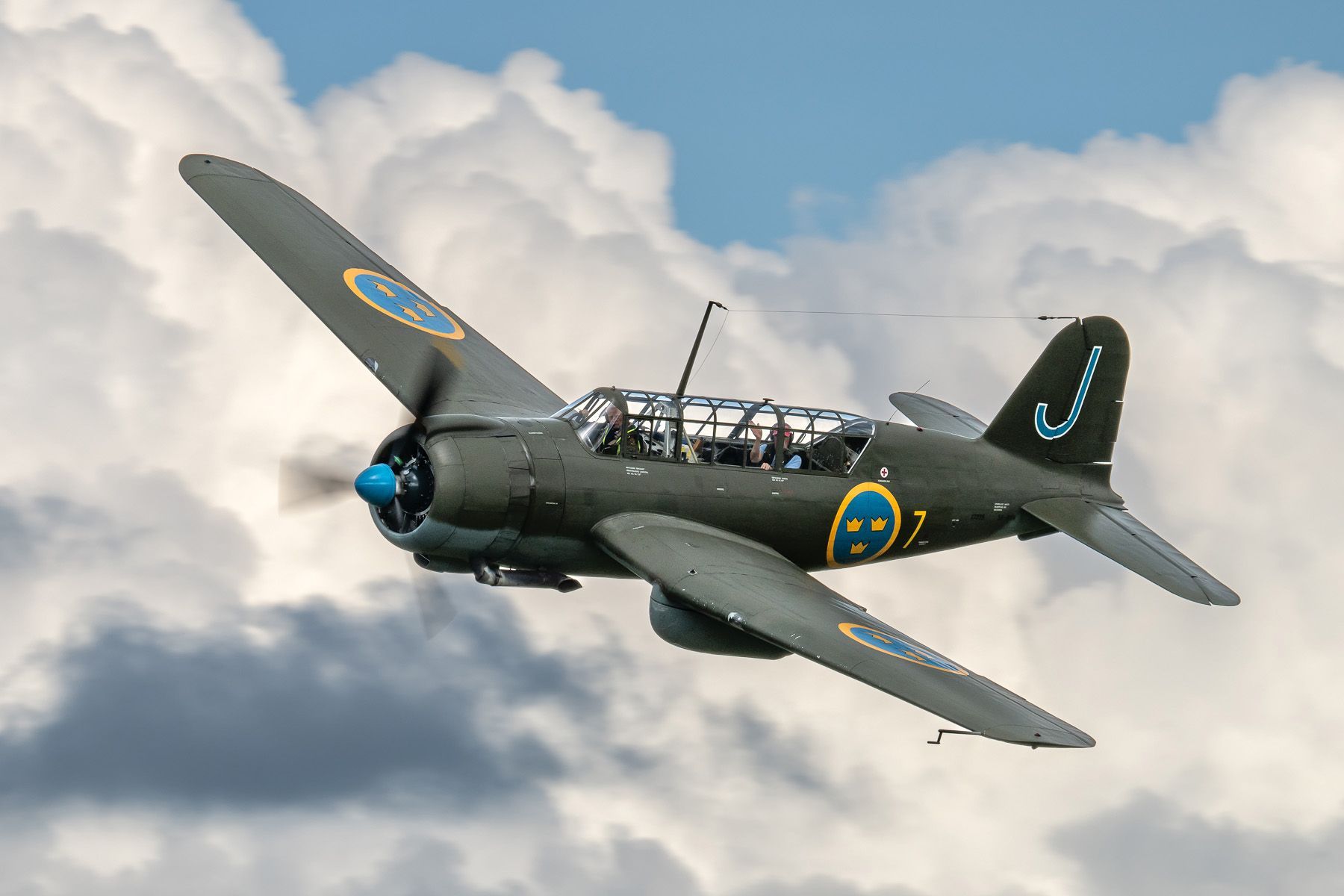
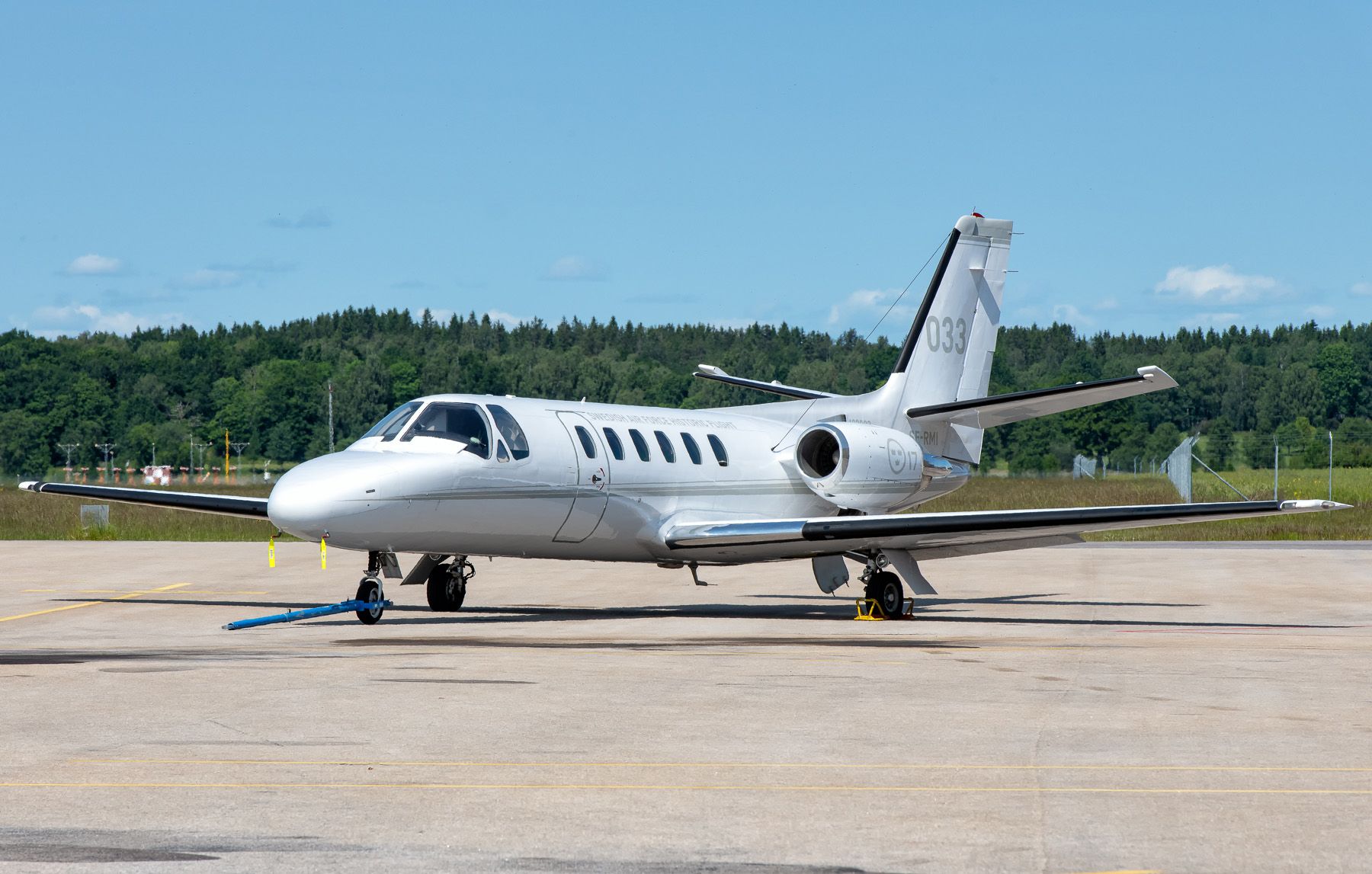
Support for the future
Last but not least, the flight’s Cessna 550 Citation SE-RMI deserves a mention. Neither Swedish nor historic, this liaison aircraft plays a vital role in supporting the organisation’s foreign displays and visits. Although the aircraft in question has no military history, it is painted as such, since the Swedish Air Force did actually operate a pair of leased Citations briefly between 1998 and 2001 in a supporting role, designated Tp 103.
Keeping the iconic shapes in the air takes a lot of effort and funds. Given the age of both the airframes and several of the volunteers that still have the knowledge and experience to operate and maintain these, it is fair to say that it gets increasingly challenging to continue flying them. Hopefully future audiences will still be able to watch and appreciate these fine aircraft for many more years. ■
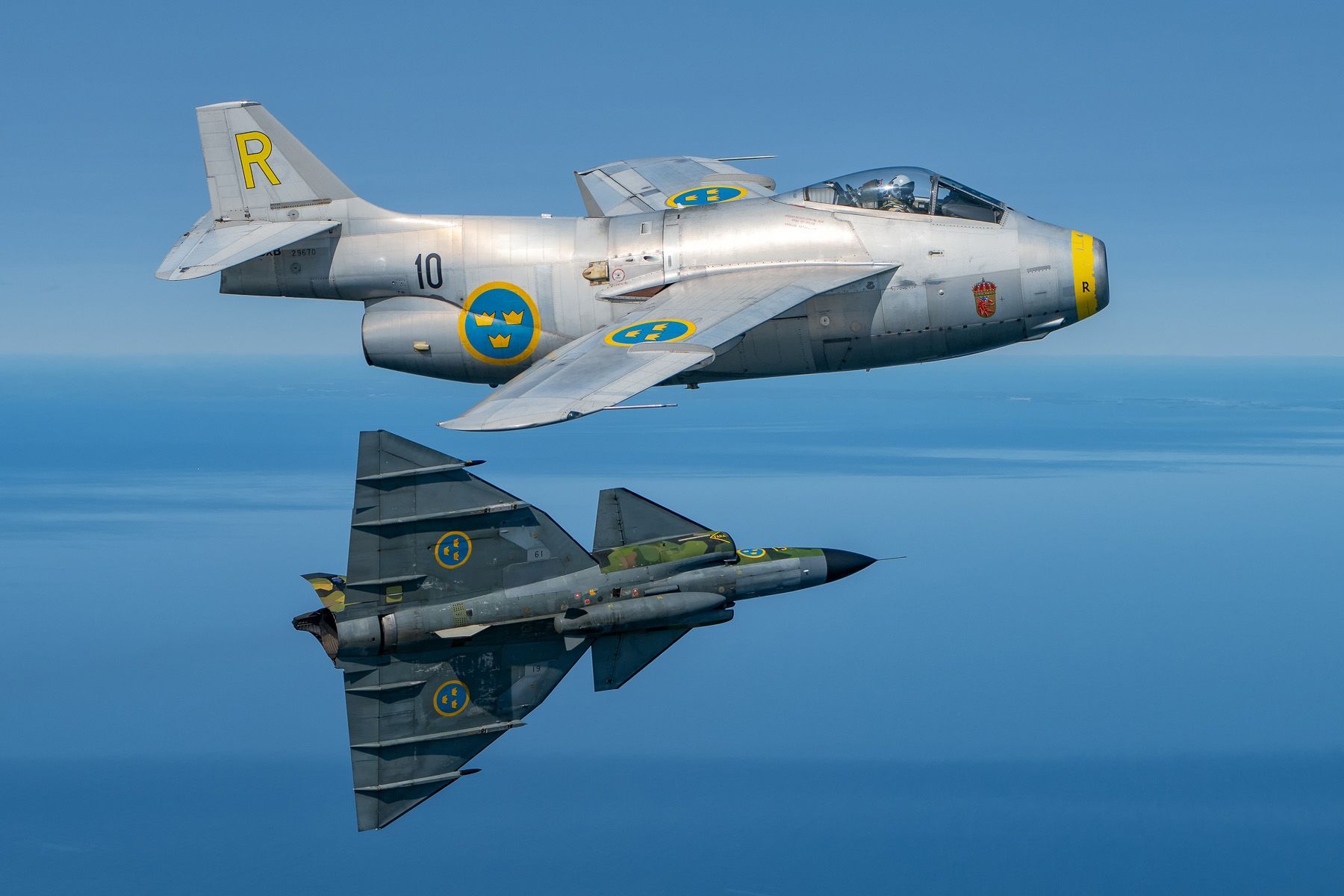
I would like to thank Olof Norén of the SwAFHF for his kind assistance. Much more background info can be found on their website at swafhf.com, do not hesitate to check it out!